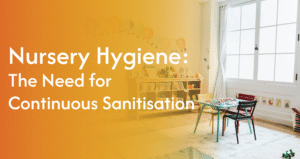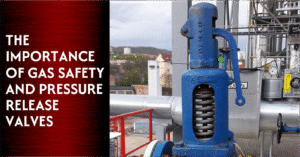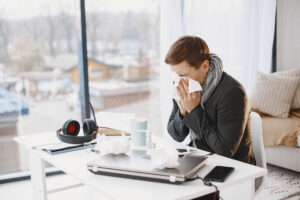UK health guidance warns that early-years settings pose “additional cleaning challenges”: young children have poor hand and respiratory hygiene and frequently touch shared toys and surfaces (UKHSA, 2020). Studies confirm nurseries harbour many microbes. For example, one trial in Danish nurseries found respiratory viruses (adenovirus, rhinovirus, RSV) on toys in most cases, even though pathogenic bacteria were rare (Ibfelt et al., 2015). Moreover, government advice notes that in nurseries and play areas, “high-risk” spots (toilets, nappy areas, food areas) can spread germs via toys and equipment (UKHSA, 2020).
Young children are immunologically naïve and readily contaminate surfaces with saliva, urine or faeces (Julian, 2016), so any microbes on toys or furniture pose a direct infection risk. Consequently, common pathogens in childcare (respiratory viruses, diarrhoeal pathogens, etc.) circulate easily, and even non-pathogenic flora (Coagulase-negative staphylococci, Bacillus spp., etc.) are found on 10–60% of nursery surfaces (Hedin et al., 2010). Notably, many bacteria survive long periods on surfaces: hospital studies show hardy organisms like A. baumannii or E. faecium remain viable for weeks on plastics or steel (Weber et al., 2010). In a childcare context, such persistence means that once surfaces are contaminated, they can continually re-seed infections if not regularly sanitised.
Microbial Contamination and Child Health Implications
The crowded, interactive nursery environment significantly amplifies infection risk. Furthermore, children in group care often experience more respiratory and gastrointestinal infections than those cared for at home (Nesti & Goldbaum, 2007). In this context, environmental contamination plays a clear role: hands of toddlers rapidly pick up microbes from toys and floors, and shared objects (toys, books, soft furnishings) act as fomites. For example, one study cites that respiratory pathogens (e.g. rhinovirus, adenovirus) were “widespread” on toys in nurseries, consistent with high illness rates in winter (Ibfelt et al., 2015).
Even though many bacteria are low-pathogenicity, opportunistic germs (and viruses) can still infect immunologically naïve children. This means the risk remains significant. If left unchecked, these pathogens contribute to frequent sickness and absenteeism. In healthcare settings, for instance, it is well known that contaminated surfaces cause 25–33% of nosocomial infections (Weber et al., 2010). Likewise, in childcare, poor surface hygiene can fuel outbreaks — for instance, a UK Salmonella outbreak in a nursery was only halted by intensive cleaning (Cowden et al., 1995). In sum, the evidence indicates that nursery surfaces and play areas routinely carry microbes, and without rigorous control, these contribute directly to the disease burden among children.
Traditional Cleaning vs Continuous Sanitisation
Conventional cleaning (daily toy washes, surface wiping, disinfection during outbreaks) reduces but does not eliminate pathogens. Specifically, a controlled trial in nurseries showed that disinfecting toys every two weeks significantly lowered microbial load (e.g. reducing detected virus on surfaces), yet it had no measurable effect on children’s illness rates (Uhari et al., 1991). In other words, intermittent cleaning either leaves too many microbes or is too infrequent to break transmission. Moreover, reviews of cleaning science warn that sanitized surfaces are rapidly re-contaminated by use (Gilbert & Stephens, 2018). In fact, one analysis concludes that “efforts to eliminate microbes from indoor surfaces are … inefficient,” and additionally, over-reliance on harsh disinfectants risks promoting resistance (Gilbert & Stephens, 2018).
In practice, even enhanced cleaning regimens (e.g. daily or post-outbreak) fail to prevent rapid bacterial regrowth once children return. For example, an ICU study found that enhanced cleaning significantly cut bacteria and hospital infections compared to routine cleaning (Mitchell et al., 2019). This finding implies cleaning matters — however, even this required laborious protocols. Therefore, in a busy nursery, it’s unrealistic for staff to clean every surface continuously. Ultimately, traditional spot-cleaning creates windows of vulnerability.
Continuous Sanitisation Technologies
To overcome the gaps of periodic cleaning, various continuous-disinfection technologies are used in healthcare and could be adapted for childcare:
- UV‑C systems (254 nm): Powerful germicidal lamps or robots disinfect air and surfaces. These are unsafe for people and used after hours or in unoccupied spaces (Nardell et al., 2008).
- Far-UV (222 nm) lamps: Recent studies show filtered krypton-chloride lamps inactivate >98% of airborne bacteria (and likely viruses) in room‑scale tests (Welch et al., 2018) while meeting skin-safety thresholds.
- Visible‐light LEDs (∼405 nm): Arrays of visible LEDs have known antimicrobial effects (Maclean et al., 2014). This is promising for occupied spaces.
- Air purification: HEPA and UV-based air cleaners remove or kill airborne pathogens continuously (SAGE-EMG, 2021).
- Antimicrobial surfaces/coatings: Copper materials or probiotic cleaning systems (which spread benign bacteria) lower pathogen survival (Caselli et al., 2016).
- Disinfectant fogging systems: Hydrogen peroxide or other foggers can be run daily. These are episodic and require room evacuation (Otter et al., 2013).
Anglo Nordic’s “Sanitising Lights”: Mechanism and Claims
Anglo Nordic markets “Sanitising Light” LED fixtures that operate in the visible spectrum (400–420 nm) to inactivate pathogens. Importantly, unlike UV‑C, this visible light is safe for people at normal ceiling‑light intensities. The manufacturers claim a “patented series of wavelengths on the visible spectrum” that kills bacteria, viruses, mould, and fungi while avoiding harmful UV exposure (Innovate UK GBIP, 2025). Mechanistically, the light is absorbed by microbial porphyrins and flavins, generating reactive oxygen that damages DNA.
Furthermore, laboratory tests confirm strong efficacy. Specifically, in one independent study by Sapienza University, continuous exposure to these visible-light LEDs (400–420 nm) reduced E. coli by ~96–98% after 4 hours and 100% by 24 hours on both stainless steel and glass surfaces (Sorbello et al., 2023). Additionally, Salmonella Typhi was completely eliminated in 4 hours by the main lamp. Meanwhile, smaller fixtures achieved ~70–100% Salmonella kill in 24 hours. In short, these lights eliminate millions of bacteria with daily exposure. Notably, the study also confirmed this was achieved “without disrupting food storage conditions” (i.e. safe for continuous use).
Because the light is continuous, even touched surfaces get constant microbial suppression. Moreover, for airborne germs, similar results exist. For instance, in a controlled test of an LED air‑steriliser bulb emitting 400–420 nm light, airborne Bacillus subtilis counts dropped ~29% in 2 h and ~54% in 4 h (Wang et al., 2020).
Evidence and Certifications for Visible-Light Sanitisation
There is increasing independent support for visible-light disinfection. For instance, the Sapienza test mentioned above was a third-party lab evaluation of visible-spectrum LED fixtures (Sorbello et al., 2023). It specifically notes that 400–420 nm visible light demonstrated broad microbicidal activity (citing Maclean et al., 2014). In addition, this technology has been formally acknowledged in recent standards. Notably, the Italian UNI/PdR 173:2025 reference practice recognises 400–420 nm light (the “Soret Band”) as an approved method for indoor sanitation.
Meanwhile, in the UK, the visible-light sanitisation technology marketed by Anglo Nordic was selected for the UK Innovate Global Business Innovation Programme in 2025 (Innovate UK GBIP, 2025).was selected for the UK Innovate Global Business Innovation Programme in 2025 (Innovate UK GBIP, 2025).
Continuous vs Intermittent Cleaning: Benefits of All-Day Sanitisation
Continuous sanitisation, therefore, fills the gaps left by intermittent cleaning. By comparison, traditional methods act for minutes to hours. However, once a disinfectant’s effect wears off, touching or breathing rapidly reintroduces germs. In contrast, continuous LED lighting works every hour it operates. For example, the Sapienza study noted that visible light was a “safe, continuous, and chemical-free sanitisation method” that could serve as an “effective alternative or complement to traditional sanitisation” (Sorbello et al., 2023).
Moreover, reviews of cleaning ecology support this. Specifically, one microbiome analysis observes that while intensive cleaning temporarily reduces bacteria, most surfaces quickly re-establish microbial populations (Gilbert & Stephens, 2018).
Conclusion: Necessity of Continuous Sanitisation in Nurseries
In UK nurseries and play areas, the evidence is clear: surfaces are germ-rich and children remain vulnerable to infection. However, periodic cleaning alone cannot fully break transmission. Moreover, official guidance highlights early years cleaning challenges (UKHSA, 2020), and real-world studies further confirm pathogen persistence despite routine cleaning (Ibfelt et al., 2015). Therefore, to maintain all-day hygiene, a continuous sanitisation layer is essential.
For example, technologies like Anglo Nordic’s visible‑light LEDs offer this added layer. In fact, peer-reviewed data and regulatory support show they keep microbial loads low (100% kill of E. coli/Salmonella in 24h) without harmful radiation. Additionally, with formal recognition (UNI 2025 standard) and UK innovation backing (Innovate UK GBIP, 2025), the path forward is clear. Thus, UK nurseries should adopt continuous disinfection alongside cleaning. Ultimately, this combination — using cutting-edge sanitising lights in parallel with traditional protocols — gives the best defence.
Sources
- UK Health Security Agency (UKHSA). (2020). Health protection in schools and other childcare facilities. https://www.gov.uk/government/publications/health-protection-in-schools-and-other-childcare-facilities/chapter-2-infection-prevention-and-control
- Ibfelt, T. et al. (2015). Effect of cleaning and disinfection of toys on infectious diseases and micro-organisms in daycare nurseries. Journal of Hospital Infection, 89(2), 109–115. https://doi.org/10.1016/j.jhin.2014.09.003
- Julian, T. R. (2016). Environmental transmission of diarrheal pathogens in low and middle income countries. Science of The Total Environment, 538, 812–822. https://doi.org/10.1016/j.scitotenv.2015.09.049
- Hedin, G. et al. (2010). Evaluation of cleaning and disinfection routines for toys at nursery schools. The Pediatric Infectious Disease Journal, 29(6), 556–560. https://doi.org/10.1097/INF.0b013e3181d8b15c
- Weber, D. J. et al. (2010). The role of the surface environment in healthcare-associated infections. Infection Control & Hospital Epidemiology, 31(S1), S3–S6. https://doi.org/10.1086/649937
- Cowden, J. M. et al. (1995). A national outbreak of Salmonella enteritidis phage type 4 infection in the United Kingdom associated with a children’s nursery: a case-control study. Epidemiology and Infection, 115(1), 15–22. https://doi.org/10.1017/S0950268800068236
- Uhari, M. et al. (1991). Effect of antimicrobial treatment of toys on infectious diseases in children. The Pediatric Infectious Disease Journal, 10(6), 438–440. https://pubmed.ncbi.nlm.nih.gov/1984986/
- Gilbert, J. A., & Stephens, B. (2018). Microbiology of the built environment. In Microbiome and Metabolome in Diagnosis, Therapy, and other Strategic Applications (pp. 273–284). Academic Press. https://doi.org/10.1016/B978-0-12-811734-6.00015-4
- Mitchell, B. G. et al. (2019). Strategies to reduce hospital-acquired infections: a multi-centre study in Australia. The Lancet Respiratory Medicine, 7(10), 845–856. https://doi.org/10.1016/S2213-2600(18)30491-6
- Nardell, E. A. et al. (2008). Air disinfection for tuberculosis control: comparative models of UV efficacy. American Journal of Respiratory and Critical Care Medicine, 177(5), 544–549. https://doi.org/10.1086/528402
- Welch, D. et al. (2018). Far-UVC light: A new tool to control the spread of airborne-mediated microbial diseases. Scientific Reports, 8, 2752. https://doi.org/10.1038/s41598-018-21058-w
- Maclean, M. et al. (2014). 405 nm light technology for the inactivation of pathogens and its potential role for environmental disinfection and infection control. Journal of Photochemistry and Photobiology B: Biology, 141, 311–322. https://doi.org/10.1016/j.jphotobiol.2014.03.007
- SAGE-EMG (2021). Role of air cleaning devices and barriers in reducing transmission of COVID-19 in indoor environments. https://www.gov.uk/government/publications/emg-role-of-air-cleaning-devices-and-barriers-in-reducing-transmission-of-covid-19-in-indoor-environments
- Caselli, E. et al. (2016). Impact of a probiotic-based hospital sanitation on antimicrobial resistance and HAI-associated pathogens: A multicentre study. Applied and Environmental Microbiology, 82(15), 4772–4781. https://doi.org/10.1128/AEM.03034-15
- Otter, J. A. et al. (2013). The role of ‘no-touch’ automated room disinfection systems in infection prevention and control. Journal of Hospital Infection, 83(1), 1–13. https://doi.org/10.1016/j.jhin.2013.06.012
- Sorbello, M. et al. (2023). Evaluation of the antimicrobial activity of a patented LED lamp in the visible spectrum. Applied Sciences, 13(4), 2302. https://www.mdpi.com/2076-3417/13/4/2302
- Wang, Z. et al. (2020). Study on sterilization effect of LED visible light on airborne bacteria. Journal of Photochemistry and Photobiology B: Biology, 209, 111885. https://doi.org/10.1016/j.jphotobiol






